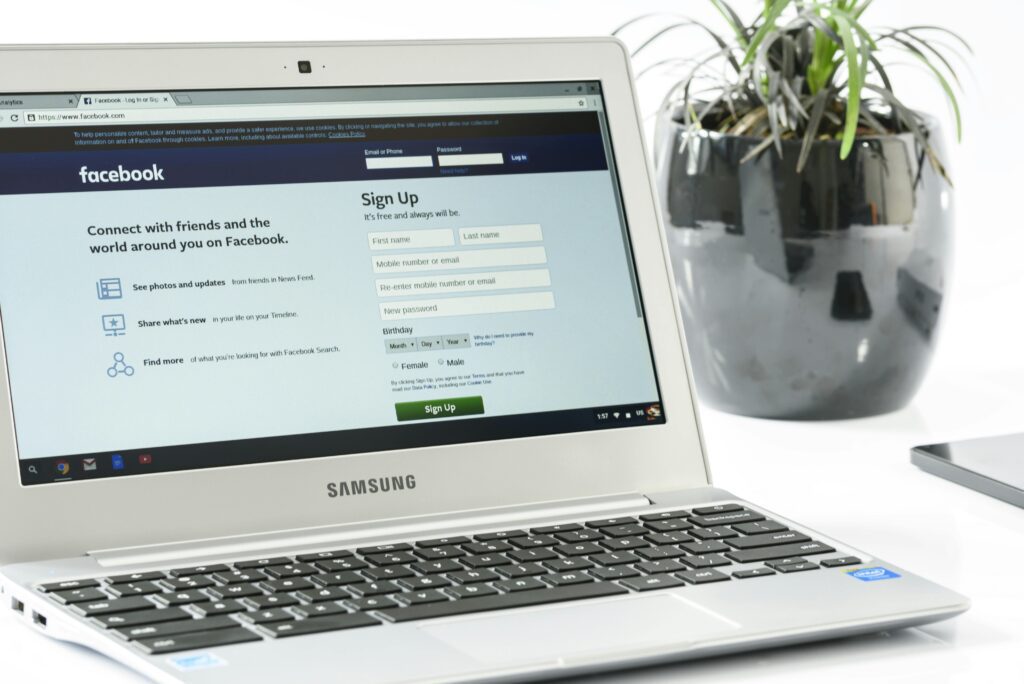Introduction
The online learning landscape faces a persistent challenge that threatens the very foundation of digital education: completion rates for online courses typically fall between 10% and 20% [1], meaning 80-90% of enthusiastic learners never reach the finish line. However, innovative educators and marketers have discovered that content delivery via email can dramatically transform these statistics, creating more engaging and successful learning experiences. This strategic approach leverages the power of direct communication, personalized learning pathways, and behavioral psychology to enhance both learning outcomes and completion rates in digital education.
What Is Course Content Delivery via Email?
Content delivery via email is a systematic approach to distributing educational content through sequential email campaigns, transforming traditional course materials into digestible, time-released lessons delivered directly to learners’ inboxes. This method combines the accessibility of email communication with structured learning methodologies to create engaging educational experiences.
The core components of email-based course delivery include automated email sequences that deliver lessons on predetermined schedules, personalized content based on learner behavior and progress, interactive elements such as quizzes and assignments embedded within emails, progress tracking and engagement analytics, and integration with traditional learning management systems. Unlike passive learning environments where students must actively seek out content, email courses create a proactive learning experience that meets learners where they already spend significant time – their email inboxes [4].
Why Content Delivery via Email Matters in Digital Marketing
Email-based course delivery has emerged as a critical strategy in digital marketing, offering unparalleled opportunities for lead generation, customer education, and brand building. The relevance of this approach is supported by compelling industry data that demonstrates its effectiveness across multiple marketing objectives.
Current statistics reveal the tremendous potential of email marketing in educational contexts. Email marketing generates an average return on investment of $36 for every dollar spent [6], making it one of the most cost-effective channels available to marketers. 59% of consumers report that marketing emails influence their purchase decisions [7], while automated emails generate 320% more revenue than non-automated emails [8]. Additionally, email course subscribers convert to customers at a rate 300% higher than those who read one-off articles [5]. Email campaigns that incorporate educational content see click-to-conversion rates grow by 27.6% [9], demonstrating the power of valuable content in driving engagement and conversions.
The Psychology Behind Content Delivery via Email Drives Learning Success
The effectiveness of email-based course delivery is rooted in fundamental psychological principles that influence human behavior and learning patterns [10]. Understanding these principles enables marketers and educators to create more compelling and successful educational experiences.
Social proof plays a crucial role in email course success, as learners are more likely to engage with content when they see evidence that others have benefited from the same material. This principle manifests in email courses through student testimonials, completion statistics, and community feedback shared within course communications. When learners receive emails highlighting that “over 10,000 students have completed this module” or featuring success stories from previous participants, they experience increased confidence in the learning process and greater motivation to continue.
Reciprocity creates a powerful psychological foundation for email-based learning relationships. When educators provide valuable, free content through email courses, learners develop a sense of obligation to engage with the material and potentially invest in additional offerings. This principle is particularly effective when email courses deliver genuine value upfront, creating a positive cycle where learners feel compelled to reciprocate engagement through course completion and eventual purchase decisions.
Fear of Missing Out (FOMO) drives immediate action and sustained engagement in email course delivery. By creating time-sensitive content releases, exclusive access to materials, and limited-time bonuses, email courses tap into learners’ desire to avoid missing valuable opportunities. This psychological trigger is particularly effective in email format, where subject lines can create urgency and course content can emphasize the exclusive nature of the learning experience.
How Content Delivery via Email Works in Practice
Successful email course delivery follows a systematic process that combines educational design principles with email marketing best practices. The mechanics involve several key steps that ensure optimal learning outcomes and engagement rates.
Step 1: Content Segmentation and Sequencing involves breaking comprehensive course material into digestible modules that can be effectively delivered via email [17]. For example, a digital marketing course might be divided into seven modules covering topics like SEO fundamentals, social media strategy, and email marketing tactics, with each module delivered over a week-long period to allow for proper absorption and application of concepts.
Step 2: Automated Email Sequence Setup requires configuring email marketing platforms to deliver content on predetermined schedules [18]. A practical example would be setting up a sequence where lesson one delivers immediately upon enrollment, lesson two arrives 48 hours later, and subsequent lessons follow at optimal intervals based on learning science research that suggests spacing content delivery improves retention rates.
Step 3: Personalization and Behavioral Triggers enhance engagement by adapting content delivery based on individual learner actions [16]. For instance, if a learner clicks on advanced topic links in early modules, the system might automatically enroll them in supplementary advanced content streams, while learners who struggle with basic concepts receive additional support materials and extended timelines.
Step 4: Interactive Element Integration transforms passive email consumption into active learning experiences. This might involve embedding quiz questions directly in emails, creating links to interactive assignments hosted on external platforms, or encouraging learners to reply with their project submissions for personalized feedback.
Step 5: Progress Tracking and Adaptive Delivery ensures learners stay engaged throughout the course duration. A real-world example involves monitoring email open rates, click-through rates, and assignment completion rates to identify at-risk learners who might benefit from personalized nudge emails or additional support resources.
Step 6: Community Building and Social Integration leverages the social aspects of learning to improve completion rates [20]. This step might involve creating exclusive Facebook groups for course participants, sharing student success stories in email updates, or facilitating peer-to-peer learning through structured email prompts that encourage learners to share their progress and insights with fellow participants.
Why Content Delivery via Email Proves So Effective for Learning
The effectiveness of email-based course delivery stems from multiple strategic, technical, and psychological factors that address common challenges in online education [21]. Research and case studies consistently demonstrate superior outcomes compared to traditional learning delivery methods.
Direct and Unfiltered Communication ensures that course content reaches learners without competing against social media algorithms or website navigation challenges [4]. Unlike content hosted on learning platforms that require active user navigation, emails arrive directly in learners’ primary communication channel, resulting in significantly higher engagement rates. Studies show that emails have average open rates of 32.55% compared to social media organic reach rates that often fall below 5% [8].
Behavioral Trigger Optimization allows for precise timing and personalization that dramatically improves learning outcomes [16]. Case studies demonstrate that personalized email courses can achieve completion rates exceeding 50% when behavioral triggers are properly implemented [22]. For example, Dr. Linnea Passaler’s mental health program saw a 216% increase in enrollment after implementing targeted email delivery strategies that responded to individual learner behaviors and preferences.
Reduced Cognitive Load and Decision Fatigue simplifies the learning process by eliminating choice overload that commonly affects traditional online courses. When learners receive structured, sequential content delivery via email, they experience reduced decision fatigue and can focus entirely on learning rather than navigation. Research conducted with over 1,200 students showed that those who received personalized email feedback demonstrated significantly higher final examination performance compared to control groups [23].
Built-in Accountability and Momentum creates natural learning rhythms that sustain engagement over time. Email delivery creates external accountability through regular touchpoints, while the sequential nature of content release builds momentum that encourages course completion. Studies indicate that the first and second weeks of email course delivery are critical for establishing engagement patterns that predict overall completion success.
How to Implement Content Delivery via Email Successfully

Implementing effective email-based course delivery requires careful planning, appropriate technology selection, and systematic execution. The following steps provide a comprehensive framework for creating successful email learning experiences.
Step 1: Define Learning Objectives and Content Architecture establishes the foundation for successful course delivery. Begin by identifying specific, measurable learning outcomes and mapping content to support these objectives. Create a detailed content outline that breaks complex topics into digestible modules, typically ranging from 5-10 minutes of reading or video content per email to maintain optimal engagement levels.
Step 2: Select and Configure Email Marketing Technology ensures reliable content delivery and comprehensive analytics tracking. ConvertKit offers specialized features for course creators including visual automation builders and seamless integration with learning management systems [18]. ActiveCampaign provides advanced behavioral tracking and CRM functionality ideal for complex course sequences. Mailchimp delivers user-friendly automation tools perfect for beginners implementing their first email courses.
Step 3: Design Engaging Email Templates and Content Structure creates consistent, professional learning experiences. Develop templates that include clear lesson objectives, main content sections, interactive elements such as reflection questions or mini-quizzes, progress indicators showing course completion status, and clear calls-to-action directing learners to supplementary resources or next steps.
Step 4: Implement Behavioral Triggers and Personalization maximizes engagement through adaptive content delivery. Set up automated responses based on learner actions, such as sending additional resources to highly engaged learners or providing extra support to those who miss multiple lessons. Configure segmentation rules that allow for personalized content paths based on learner preferences, skill levels, or progress rates.
Step 5: Create Assessment and Feedback Mechanisms ensures learning objectives are being met. Integrate quiz platforms like Typeform or Google Forms to create assessments that can be automatically scored and used to trigger personalized feedback emails [5]. Establish systems for collecting and responding to learner questions and concerns through dedicated email addresses or community platforms.
Step 6: Monitor Performance and Optimize Delivery continuously improves course effectiveness. Track key metrics including email open rates, click-through rates, lesson completion rates, and overall course completion percentages. Use A/B testing to optimize subject lines, send times, and content formats. Regularly survey learners to gather qualitative feedback about their learning experience and content preferences.
Step 7: Scale and Systematize Operations enables sustainable growth and consistent quality [5]. Document all processes and procedures to ensure consistent course delivery quality. Create systems for handling increased enrollment volumes, including automated onboarding sequences and scalable support systems. Develop processes for updating and refreshing course content based on learner feedback and industry changes.
Advanced Strategies for Maximizing Content Delivery via Email Impact
Beyond basic implementation, advanced strategies can significantly enhance the effectiveness of email-based course delivery. These techniques leverage emerging technologies and sophisticated behavioral psychology to create exceptional learning experiences.
Hyper-Personalized Nudge Systems can double completion rates through targeted intervention strategies. Research demonstrates that courses implementing personalized nudge emails based on individual learner data achieve completion rates exceeding 50% compared to generic course delivery approaches. These systems analyze learner behavior patterns, engagement levels, and progress data to deliver precisely timed motivational messages and support resources.
Multi-Channel Integration creates cohesive learning ecosystems that extend beyond email. Successful implementations combine email course delivery with complementary channels such as dedicated mobile apps, private community groups, live webinar sessions, and interactive video platforms. This approach addresses different learning preferences while maintaining email as the primary coordination and progress tracking mechanism.
AI-Powered Content Optimization enables dynamic course personalization at scale. Advanced email marketing platforms now incorporate artificial intelligence to analyze learner engagement patterns and automatically adjust content delivery timing, format preferences, and supplementary resource recommendations. These systems can predict optimal send times for individual learners and customize content difficulty levels based on demonstrated comprehension rates.
Conclusion
Content delivery via email represents a transformative approach to digital education that addresses the fundamental challenges plaguing online learning completion rates. By leveraging direct communication channels, behavioral psychology principles, and sophisticated automation technologies, email-based courses can achieve completion rates exceeding 50% compared to traditional online learning completion rates of 10-20% [1].
The key takeaways for marketers and educators include the critical importance of systematic content sequencing that breaks complex topics into digestible email-sized modules, the power of behavioral triggers and personalization in maintaining learner engagement throughout course duration, the necessity of selecting appropriate technology platforms that support advanced automation and analytics tracking, and the value of continuous optimization based on learner feedback and performance data analysis.
Content delivery via email is not merely a distribution method—it is a comprehensive educational strategy that transforms passive learning into active, engaging experiences that drive both knowledge acquisition and business outcomes. As digital marketing continues to evolve toward more personalized and value-driven approaches, email-based course delivery stands as a proven methodology for building deeper customer relationships while delivering genuine educational value.
The future of digital marketing lies in creating authentic value for audiences, and email course delivery provides the perfect vehicle for achieving this goal while simultaneously building sustainable business growth through enhanced customer education and engagement.
Frequently Asked Questions About Content Delivery via Email
1. How long should an email course be for optimal completion rates?
The optimal length for email courses is between 5-10 days with daily delivery. Courses shorter than 5 days don’t provide enough exposure to establish authority, while longer courses can overwhelm subscribers and reduce engagement. Research shows that email courses with 7 emails or fewer, each under 1,000 words, achieve significantly higher completion rates [2]. Breaking content into digestible sections results in 70% higher completion rates compared to longer, packed formats [3]. The key is maintaining focused, actionable content that builds momentum rather than creating comprehensive tutorials that may discourage learners from completing the entire sequence.
2. What platforms are best for delivering courses via email?
The top email marketing platforms for course creators include ConvertKit, ActiveCampaign, and Mailchimp, each offering specialized features for educational content delivery. ConvertKit is particularly popular among course creators due to its native integration with most online course platforms like Teachable and Kajabi. ActiveCampaign provides advanced behavioral tracking and automation capabilities essential for personalized learning experiences. For beginners, built-in email marketing features of course platforms may suffice, but specialists recommend dedicated platforms for lists over 10,000 subscribers or advanced segmentation needs [5]. Email marketing maintains a 2.8% conversion rate, making it the #1 channel for both B2C and B2B marketing [5].
3. How effective is email automation for course delivery compared to manual sending?
Email automation dramatically outperforms manual sending across all engagement metrics [6]. Automated emails achieve 70.5% higher open rates and 152% higher click-through rates compared to standard marketing messages [7]. In educational contexts, automated email campaigns generate conversion rates 180% higher than batch emails [7]. Automated sequences also save significant time by eliminating repetitive manual tasks while ensuring students receive timely, relevant information [8]. The automation advantage extends to completion rates, with automated educational emails showing 320% higher conversion rates than non-automated campaigns [6]. This superior performance stems from precise timing and contextual relevance that manual sending cannot consistently achieve.
4. What return on investment can businesses expect from email course delivery?
Email marketing generates an exceptional $36 return for every dollar spent, making it one of the most cost-effective marketing channels available [9]. Educational email campaigns show even stronger performance, with email course subscribers converting to customers at rates 300% higher than those reading one-off articles [3]. Personalized email content can increase revenue by up to 760% while boosting open rates by 50% [9]. For course creators specifically, email automation can improve client retention by over 150% when integrated into onboarding processes. The combination of high engagement rates, superior conversion performance, and automated delivery makes email course delivery one of the highest ROI marketing strategies for educational businesses.
5. How can personalized email interventions improve course completion rates?
Personalized email interventions significantly impact course completion through targeted behavioral triggers. Research on MOOC participants showed that instructors sending personalized reminder emails to students who missed weekly quizzes resulted in immediate, delayed, and cumulative impacts on completion rates [11]. Personalized nudge emails can achieve completion rates exceeding 50% compared to generic approaches that typically see 10-20% completion [12]. These interventions work by creating accountability, providing timely support, and demonstrating instructor engagement with individual learner progress. The most effective personalized interventions analyze learner behavior patterns, engagement levels, and progress data to deliver precisely timed motivational messages and support resources. This approach transforms passive learning into an actively supported educational experience.
- LearnStream. “What Is the Average Online Course Completion Rate and Why Does It Matter?” June 20, 2025. https://learnstream.io/blog/what-is-the-average-online-course-completion-rate-and-why-does-it-matter/
- Gist. “Course Delivery.” October 22, 2019. https://getgist.com/workflow/course-delivery/
- CourseCreek. “Email Marketing Software Made For Online Courses.” July 10, 2024. https://www.coursecreek.com/blog/Email%20Marketing%20Software%20Made%20For%20Online%20Courses
- Phalera CRM. “7 Ways Email Marketing Boosts Content Distribution.” February 28, 2025. https://phaleracrm.com/email-marketing-for-content-distribution/
- Marketing Scoop. “The Complete Guide to Creating an Email Course for Your Business.” October 21, 2024. https://www.marketingscoop.com/marketing/the-complete-guide-to-creating-an-email-course-for-your-business/
- Forbes Advisor. “49 Top Email Marketing Statistics.” March 28, 2025. https://www.forbes.com/advisor/business/software/email-marketing-statistics/
- OptinMonster. “40+ Email Marketing Statistics You Need to Know for 2025.” May 2, 2025. https://optinmonster.com/email-marketing-statistics/
- Porch Group Media. “50 Unbelievable Email Marketing Statistics (2025).” May 29, 2025. https://porchgroupmedia.com/blog/50-unbelievable-email-statistics-you-need-to-know/
- Omnisend. “Email Marketing Statistics 2025: Key Insights.” April 16, 2025. https://www.omnisend.com/blog/email-marketing-statistics/
- VerticalResponse. “Email Marketing Psychology: What Really Makes People Click.” September 22, 2024. https://verticalresponse.com/blog/email-marketing-psychology-what-really-makes-people-click/
- Litmus. “3 Powerful Ways to Use Social Proof in Email Marketing.” February 19, 2025. https://www.litmus.com/blog/social-proof-in-email
- Moosend. “10 Social Proof Email Examples And Best Practices.” December 26, 2024. https://moosend.com/blog/social-proof-email-examples/
- Coursera. “What Is Social Proof and How to Use It?” October 21, 2024. https://www.coursera.org/articles/social-proof
- LinkedIn. “How can you apply the principle of reciprocity in your sales emails?” September 25, 2023. https://www.linkedin.com/advice/0/how-can-you-apply-principle-reciprocity-your
- Johnny Holland. “Email Marketing and FOMO: Crafting Compelling Subject Lines.” March 29, 2024. https://johnnyholland.org/2024/03/email-marketing-and-fomo-crafting-compelling-subject-lines/
- Smaily. “Improving Communications With Behavioral Email Marketing.” November 1, 2023. https://smaily.com/behavioral-email-marketing-how-to-take-your-email-marketing-to-the-next-level/
- 14KB Sol. “Email Marketing For Content Distribution: How To Use It?” May 26, 2025. https://14kbsol.com/email-marketing-for-content-distribution-how-to-use-it
- Pro Membership Sites. “5 Best Email Marketing Tools for Course Creators.” February 3, 2025. https://promembershipsites.com/5-best-email-marketing-tools-for-course-creators/
- “Achieving double completion rates through Hyper Personalized Nudge Emails: A Case Study.” https://www.youtube.com/watch?v=aa-bFZce8tY
- eLearning Company. “The Role and Impact of Email Messaging in Learning Experience Design.” https://elearning.company/blog/the-role-and-impact-of-email-messaging-in-learning-experience-design/
- ActiveCampaign. “How Email Marketing Can Enrich Your Content Distribution Results.” May 9, 2025. https://www.activecampaign.com/blog/email-marketing-for-content-distribution
- InboxAlly. “Email Deliverability Case Study.” September 10, 2024. https://www.inboxally.com/solutions/case-studies/email-deliverability-case-study
- Reynolds, Madison, et al. “Students got mail: Do students read semi-tailored emails and what is the impact?” Australasian Journal of Educational Technology 40, no. 1 (2024). https://ajet.org.au/index.php/AJET/article/download/8812/2144/32822
- Jordan, Katy. “Massive Open Online Course Completion Rates Revisited: Assessment, Length and Attrition.” International Review of Research in Open and Distributed Learning 16, no. 3 (June 2015). https://doaj.org/article/287ee872cbcb45409ae2f19bacca9119
- Udemy. “Mastering Email Deliverability: The Comprehensive Guide.” June 24, 2025. https://www.udemy.com/course/mastering-email-deliverability-the-comprehensive-guide/
Read more
Boost Revenue Now: Essential Advertising KPIs Every CEO Uses
Advertising Automation KPIs Every Marketer Should Track Picture this: companies are crushing it with $5.44 back…
10 Game-Changing Facebook Ads Workflows for 2025 Growth
Picture this: 76% of businesses using Facebook ads workflows slash their campaign management time by 30%….
10 Deadly Retargeting Mistakes Business Owners Make
Did you know that retargeting campaigns can boost conversion rates by up to 150%? Yet many…
10 Invoice Automation Workflows That Skyrocket Cash Flow Now
Are you still stuck with paper invoices and typing in data by hand? Here’s a…
Revolutionary: 10 Social Media Automation Strategies Crushing Competition
Imagine this: you’re staring at your calendar, heart racing as you realize your biggest event…
10 Hidden Price drop Automation Secrets Competitors Don’t Know
Did you know that 77% of businesses using marketing automation see increased conversion rates, while…







